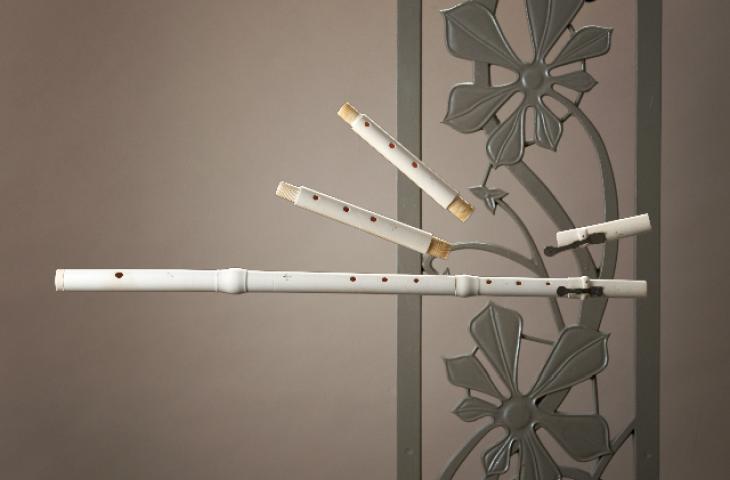Transverse flute

Transverse flute, Scherer, Butzbach, Germany, 18th century, inv. 0448
This ivory transverse flute carries the marks of Scherer, a family of instrument makers active in the eighteenth century in Butzbach, Germany. More than thirty transverse flutes from their workshop have been preserved. They were among the first to build instruments with three interchangeable upper bodies (corps de rechange). In those times, there was no one standard pitch and the interchangeable bodies allowed the instrument to be easily adjusted to the prevailing pitch, without it sounding out of tune.
King Frederick II of Prussia possessed an ivory flute from Scherer. In Potsdam, the enlightened king took lessons from Johann Joachim Quantz, who wrote something like three hundred flute concertos. His treatise on playing the transverse flute, Versuch einer Anweisung die Flöte traversière zu spielen, achieved great success and was reprinted several times, besides being translated into French, Dutch and English, among other languages.